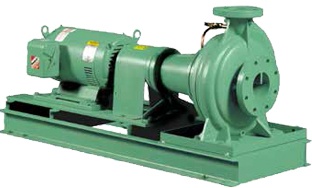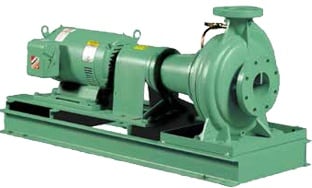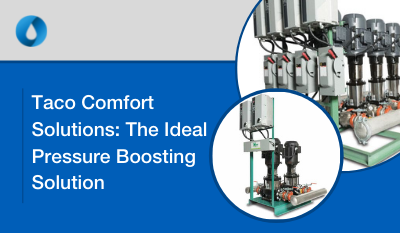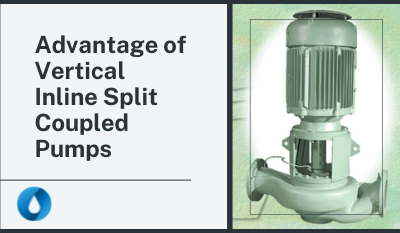 There are a lot of options for hydronic HVAC pumps, not only with brands but also sizes, styles, accessories and functionality. Sometimes, it can be tough to discern the difference and decide which pump you need for an application. This is the first in a series of blogs to help you decide which pump style to choose.
There are a lot of options for hydronic HVAC pumps, not only with brands but also sizes, styles, accessories and functionality. Sometimes, it can be tough to discern the difference and decide which pump you need for an application. This is the first in a series of blogs to help you decide which pump style to choose.
Let’s start with pipe sizes. In the Carolinas, the most common pipe size range is 2” to 8”. Obviously, the best pipe size is the smallest size that will accommodate the application. Pipe sizes are selected based on the GPM flow rates, pressure considerations and total water consumption.
Before you even start to choose a style of pump, it’s important to consider the many types of pumps available for your application.
- Base mounted end suction pump (BMES)
- Close-coupled end suction pumps (CCES)
- Vertical inline close-coupled pumps (VICC)
- Vertical inline split-coupled pumps (VISC)
Then, there are multiple considerations to review prior to selecting a pump for your hot water and chilled water hydronic HVAC systems.
- Consider the available space.
- First, review the available floor space with considerations to the full footprint of the pump installation including all piping and accessories.
- Bear in mind the service clearance. How much room, both vertical and horizontal, is needed to properly maintain and service the pump?
- Does the pump need to be suspended in the air? If so, is there adequate room for piping and structural support?
- Think about service requirements.
- Mechanical seals will need to be replaced in time. Does the pump you’re selecting have appropriate access to the mechanical seal?
- Misaligned pumps can wreak havoc not only on the pump itself but potentially on the entire system. Can the pump be easily aligned?
- You don’t want to have to entirely dismantle the pump in case of motor problems. Consider how easy it is to remove the motor for repair or service work.
- Regardless of the pump selected, ensure that you arrange for a quality installation for increased longevity and durability of your pump.
- The life and death of your pump can often be traced back to whether or not best practices were followed during initial installation of your hydronic pumps. During installation, ensure that BMES pumps are appropriately grouted and properly aligned. Service technicians visit so many facilities with ungrouted (or improperly grouted) pumps or pumps that have never been aligned correctly.
- Pump housing are not designed to carry external loads. Regardless of pump design, NO external piping loads or forces should be applied to the pump.
- Balancing is an essential part of minimizing pump vibration, increasing bearing life and keeping downtime and repair costs to a minimum. An unbalanced pump motor could wreak havoc on your pump.
- According to an article in Waterworld, the second leading cause of pump breakdowns is bearing failure. Proper lubrication, regular maintenance and keeping the system contaminant-free will help keep your bearings doing their job and your pumps running smoothly.
- While we always try to say that price should never be the final determining factor in your pump selection, we realize that all projects have budgets. There are a number of factors to consider, however, when determining the actual cost of a pump.
- Cost of Pump
- Cost of Motor
- Cost of Piping/Mounting/Grouting
- Cost of Alignment
- Always consider net positive suction head (NPSH). This is the minimum pressure required at the suction port of the pump to prevent the pump from cavitating. You must have more suction side pressure available than the pump requires.
This is only the beginning for proper pump selection! To find out more, stay tuned for our next pump selection blog: The Case for Base Mounted End Suction Pumps. (Sounds like a detective novel, right?)






.png)




Submit a Comment